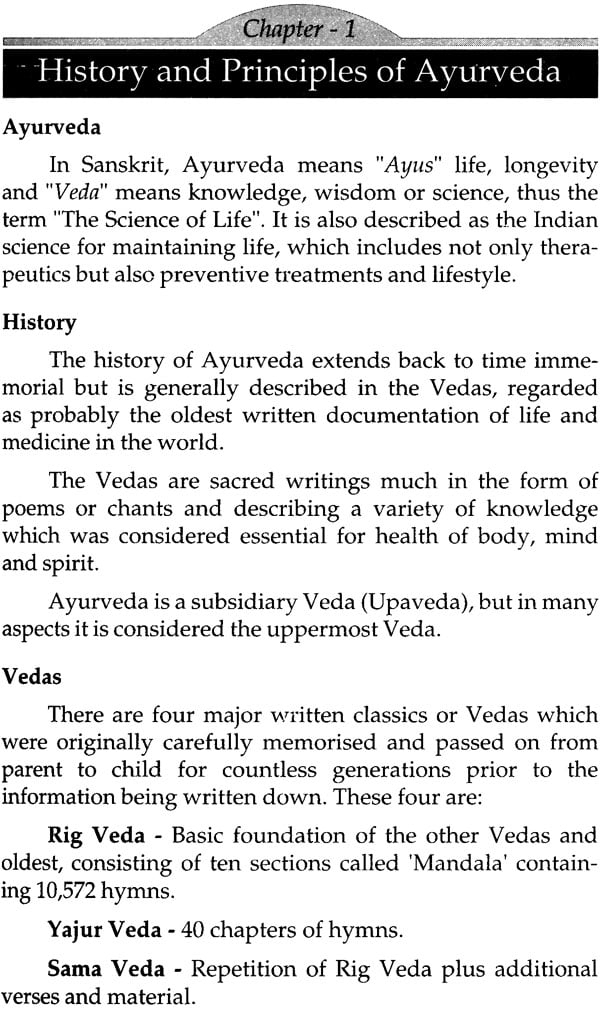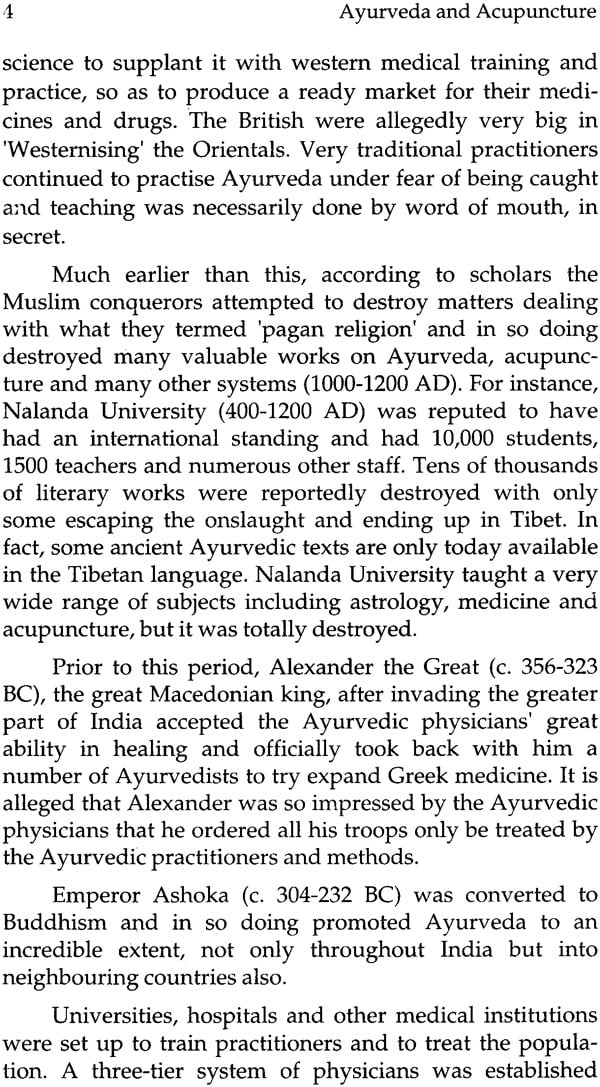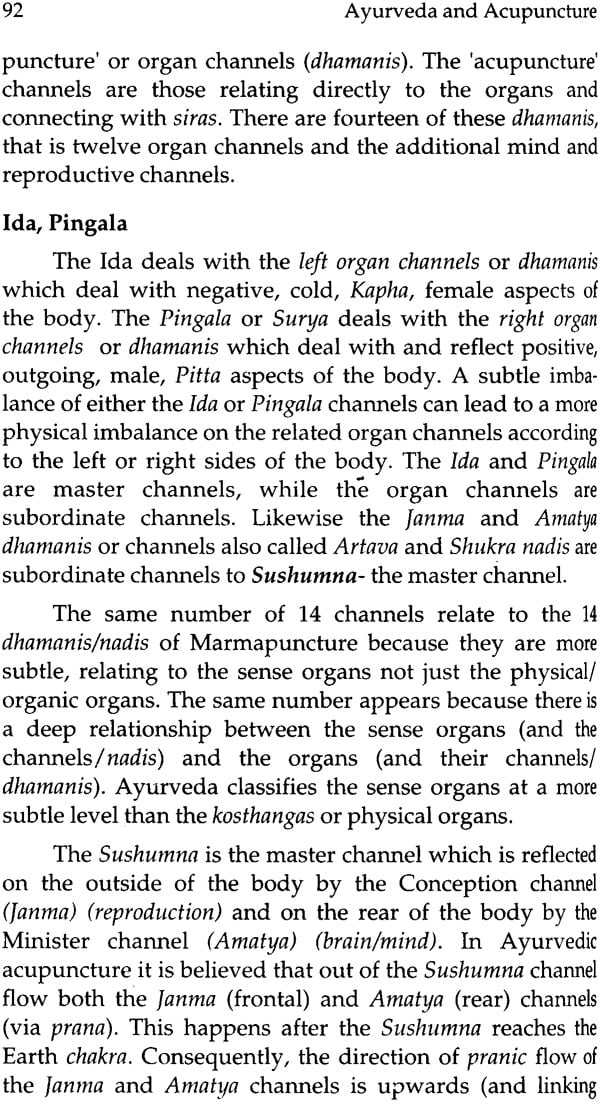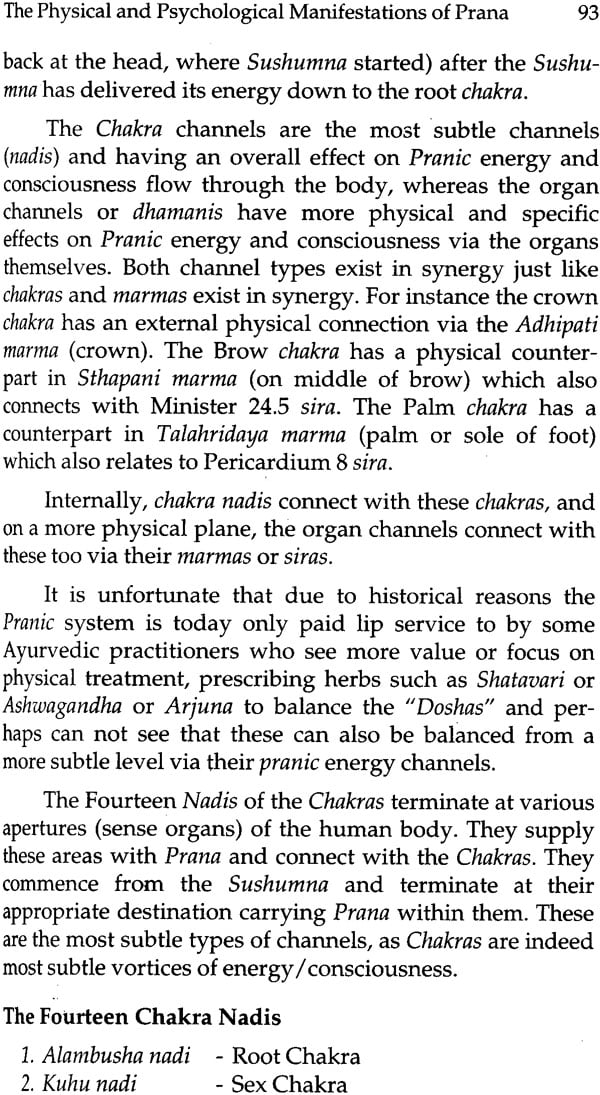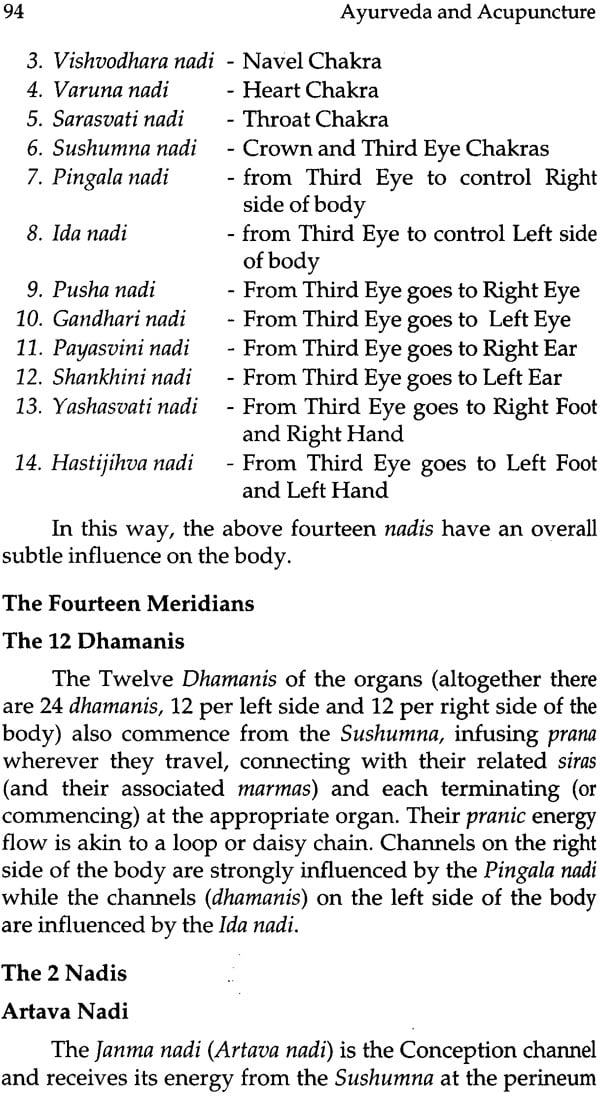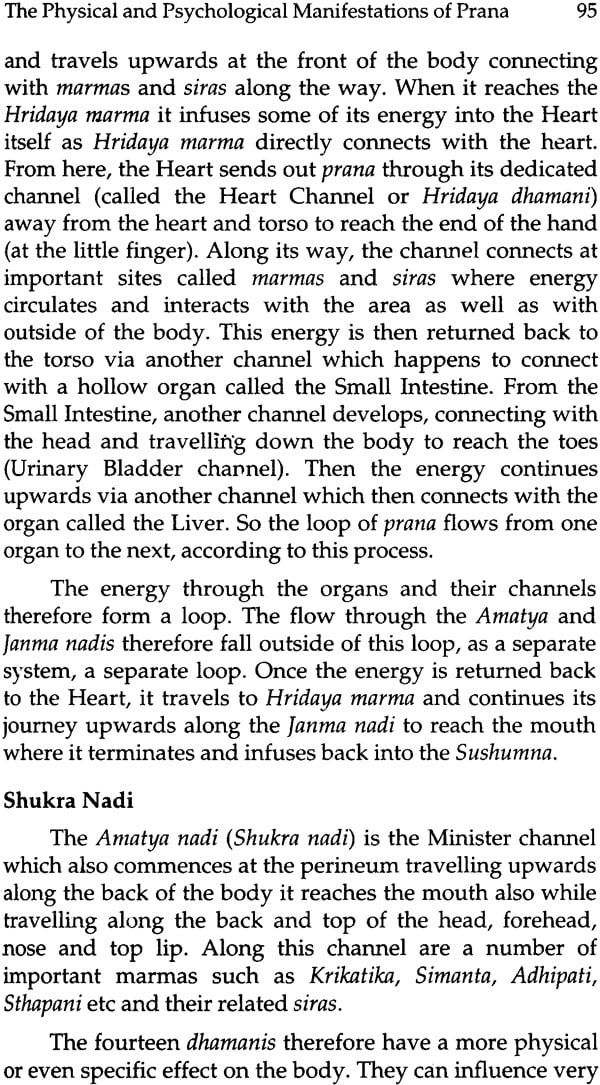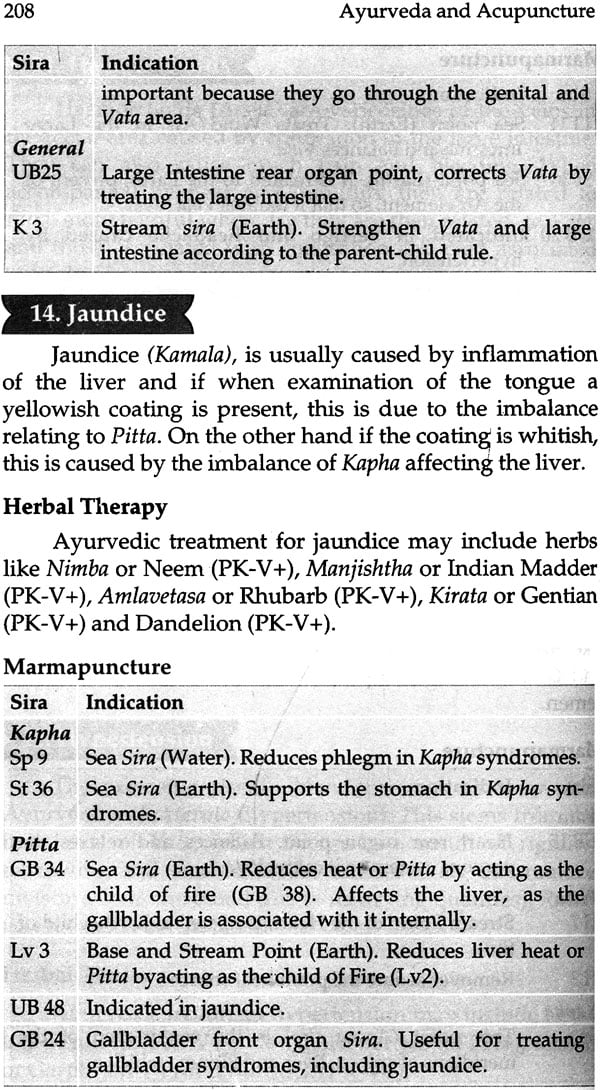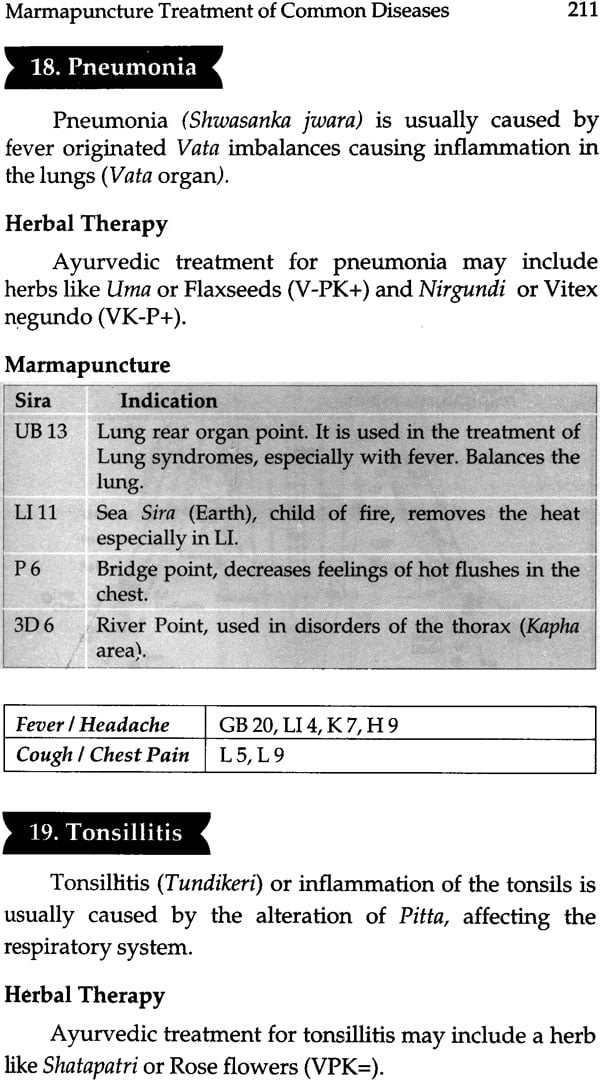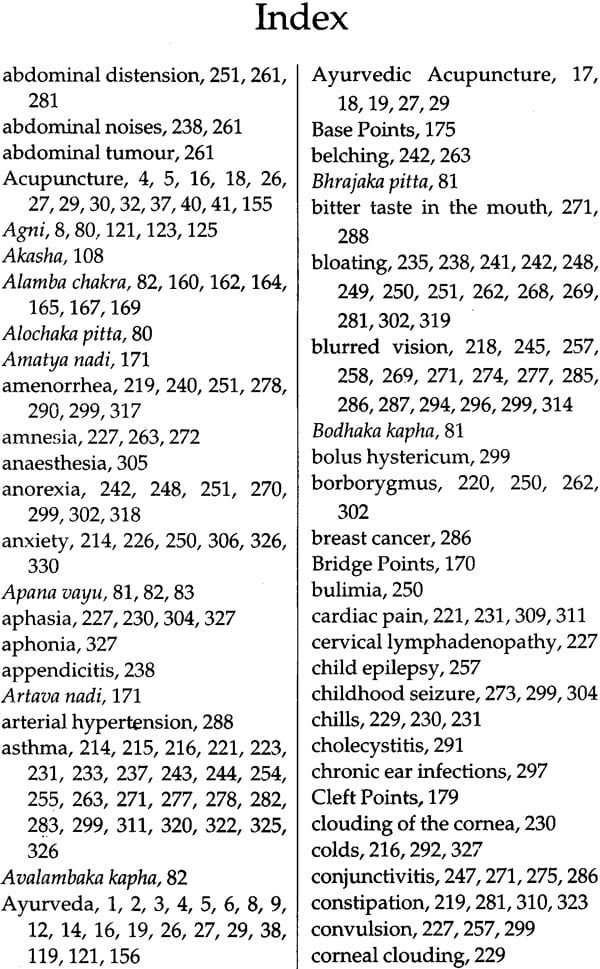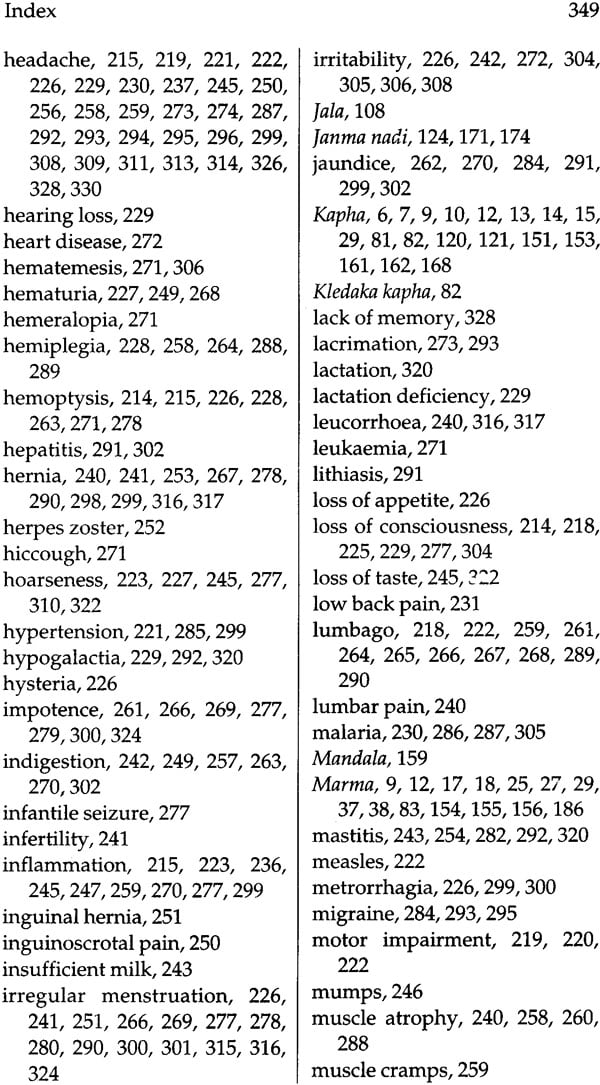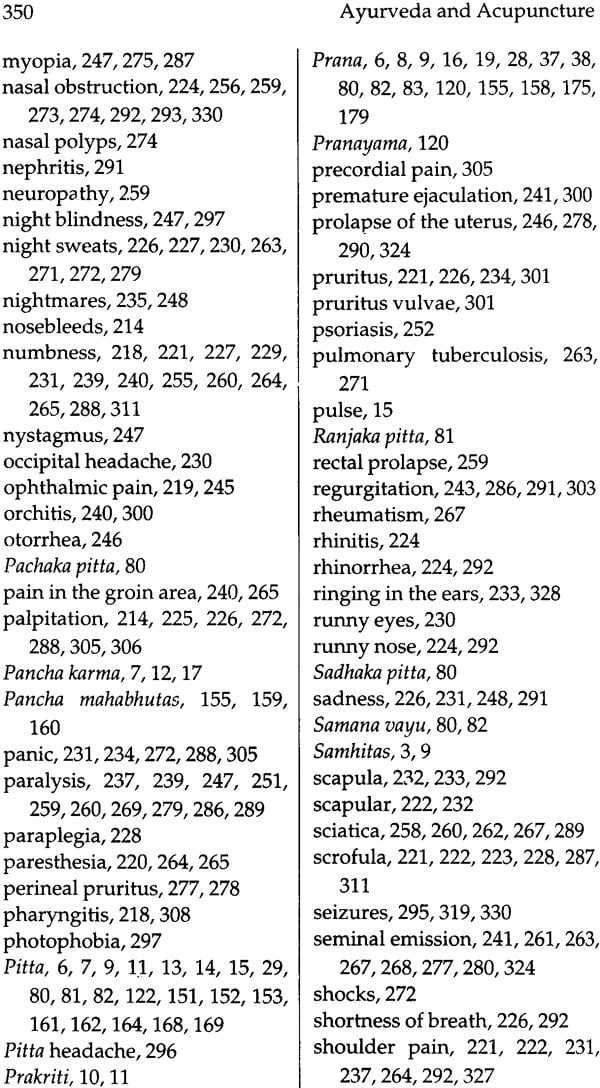
Ayurveda and Acupuncture (Theory and Practice of Ayurvedic Acupuncture)
Book Specification
| Item Code: | NAM780 |
| Author: | Dr. Frank Ros |
| Publisher: | Chaukhamba Sanskrit Pratishthan |
| Language: | English |
| Edition: | 2016 |
| ISBN: | 9788170846406 |
| Pages: | 351 |
| Cover: | Hardcover |
| Other Details | 8.5 inch X 5.5 inch |
| Weight | 550 gm |
Book Description
About the Book
In Ayurveda & Acupuncture, Dr. Frank Ros reveals the ancient Ayurvedic system of acupuncture originally described by Sushruta and called Siravedhana or Marmapuncture which has remained secret for many years.
Ayurveda & Acupuncture is a comprehensive introduction for the lay person to truly understand not only Ayurvedic acupuncture but Ayurveda as well. On the other hand, through detailed drawings and explanations it is also an in-depth instructional manual for practitioners who practice Acupuncture or Ayurveda and who with to learn how to mesh these two together to form an effective, integrative and synergistic system.
The International Academy of Ayuveda (IAA) is the premier institution in India for the international students of Ayurveda. We work closely with our local universities in India in order to maintain an excellent standard ofg Ayurvedic teaching worldwide. Our professional staff has taught in many countries including Europe, Canada, USA, Brazil, Argentina, Chile, Austraia, Russia, China and Japan.
Marma Therapy and Ayurvedic Acupuncture or Siravedhana, (also commonly called Marmapuncture) is a specialised field stemming from ancient Shalya Chikitsa and originally taught as a therapy by the Dhanvantari surgical school in ancient India. Although originally banned in India by the colonial powers along with Ayuveda, Ayurvedic acupuncture is one again slowly beginning to be practised in India and Sri Lanka.
We are pleased to acknowledge our strong connection with Dr. Frank Ros, a colleague and facilitator of Ayurvedic acupuncture teaching.
Frank, besides being the author of an authoritative book on Ayurvedic Acupuncture (1994) is also the author of a chapter in one recent internationally-released books Ayurveda and Marma Therapy (Lotus Press. USA), written by Dr. S. Ranade, Dr. A Lele and Dr. D. Frawley.
He has taught in Australia and overseas for a number of years. We have found Frank to be a knowledgeable and skill practitioner and lecturer and we highly recommend him.
The IAA currently provides certification for international postgraduate students of Ayurveda, who major in Ayurvedic acupuncture as specifically taught by Dr. Ros.
During the course of time has been a constant effort by all people in the pursuit of happiness. In different cultures and at different times there have developed a wide range of methods both physical and existential to overcome pain.
Although many of these methods appear to be very different, actually all reflect the need to overcome human suffering. It is within this same context that is the theme or point ancient science of acupuncture, approached from the perspective of traditional Indian medicine known as Ayurveda. Interestingly, the term for needle in Chinese in Bian which means stone and demonstrates just how ancient acupuncture really is.
Ayurveda is an ancient science developed over thousands of years in India by sages called Rishis, who left this legacy of wisdom and knowledge for the benefit of mankind. The knowledge of acupuncture points on the body surface which may be used for therapeutic purposes have been developed both within Ayurveda and in traditional Chinese medicine. The latter, in particular, undoubtedly the most widespread acupuncture system today has become a very important method of treating diseases.
Ayurveda is a living science that adapts to living being and their needs. For a very long time, the knowledge of the points have been known in Ayurveda as siras and marmas but was quite relegated to certain circles, people, in general, within families – that transmitted this knowledge without revealing it publicly.
For this reason, among others, Ayurvedic acupuncture, known as suchi-karma, had no development in modern times as important as Chinese acupuncture, al-though this knowledge was always there in the main text of Ayurveda. In fact recent research conducted by doctors B. K. Joshi, R. L. Shah and G. Joshi demonstrate that the knowledge of the points (siras), meridians (dhamanis) and vital areas (marmas) was duly mentioned in the Sushruts Samhita, a classic text of Ayurveda, written several thousands years ago (500 B.C.). However, these terms were misinterpreted henceforth with the passage of time and wrongly translated as simply views, arteries and places that were not to be injured during surgery, and that the marmas concept is based purely on their susceptibility to injury or death. However, it's rewarding to learn that these points or areas may also be used to treat various health problems.
With the passage of time and the decrease of cultural differences, these concepts that were dormant and largely hidden, often because they were banned by the colonial powers that controlled India for a long time are beginning to be revealed once again for the benefit of all people, irrespective of race, culture or religion.
The Ayurvedic acupuncture system integrates the concept of meridians and points [known as dhamanis and siras] and also uses its internationally-accepted numbering system (nomenclature) similar to Chinese acupuncture, while also incorporating the benefits of the wisdom of Ayurveda. The unwary reader may mistakenly think that this book is a synthesis of the concepts of traditional medicines of India and China. However, actually this is an important step for the integration between these two sciences which, although appearing different, in fact share the same basic principles, etc. since as much of their knowledge have the same historical roots. Therefore, the principles and techniques of Ayurveda can be used in perfect in perfect harmony by practitioners of most schools of acupuncture.
However, we must not forget that any kind of know-ledge or technique used in medicine can be useless if it has no practical application, and it is just then, when people have the opportunity to practice suchi-karma that it may reveal its effectiveness.
Sometimes one can fall in the trap of discussing whether this technique or the technique corresponds to a particular place or who owns the knowledge, but it loses its meaning when one comes face to face with suffering, and it is at this point that the real answer lies when these methods serve to mitigate the pain and suffering of people all over the world.
Although this knowledge has been kept secret for a long time, as a way to kept alie this teaching, in these new times predominated by communication, it is a must to disclose and make public its as part of our heritage as human beings. These techniques should be employed to maintain the integrity of peoples' health in both its physical and spiritual aspects, and not to manipulate or generate more imbalances, because in that way we once again justify its concealment as its occurred before, which is not appropriate for these modern times.
It is a moral obligation to integrate and unify all health knowledge so they can be accessed in a simple and clear way be everyone. Just think about all the diseases and problems that can be avoided by utilising the knowledge of acupuncture and complementary medicines within the field of traditional medical practice.
Therefore, I hope this book will be useful for those interested in the science of haling. It is my sincer hope that those who come across suchi-karma will find it very useful and a source of personal satisfaction, as it has been for me, and to those skilled in natural medicine, that it may serve as an incentive to remain on track to improve the health of the world.
I am most happy to have been able to collaborate with my colleague Dr. Frank Ros in the publication of this book Ayurveda & Acupuncture.
| 1 | History and Principles of Ayurveda | 1 |
| What exactly is Ayurveda? | 5 | |
| 2 | History and Philosophy of Ayurvedic Acupuncture | 18 |
| Philosophy of Ayurvedic Acupuncture | 37 | |
| 3 | Energetics of Ayurveda | 42 |
| The Five Elements (Pancha mahabhutas) | 47 | |
| The Cycles of Prana and the Five Elements | 52 | |
| The 12 Major Organs | 69 | |
| 4 | The Physical and Psychological Manifestations of Prana | 74 |
| The Trigunas | 87 | |
| The Chakras (energy vortices) | 91 | |
| Ayurvedic Circadian Bio-rhythms | 98 | |
| 5 | Ayurvedic Acupuncture Channels in te Body | 107 |
| 6 | The 107 Major Marmas | 127 |
| 7 | The Major Acupuncture Siras | 148 |
| The 5 element points of Ayurvedic Acupuncture | 155 | |
| The bridge points (setu siras) | 170 | |
| The base points (mula siras) | 175 | |
| The clleft points (antara siras) | 179 | |
| 8 | Techniques and Treatment of Marmapuncture | 182 |
| Typical Case Studies | 189 | |
| 9 | Marmapuncture Treatment of Common Diseases | 196 |
| Appendix | Marmapuncture Siras and their Therapeutic Effects | 213 |
| Conclusion | 332 | |
| Using Marmapuncture in Practice | 334 | |
| Bibliography | 338 | |
| Glossary | 340 | |
| Index | 347 |
